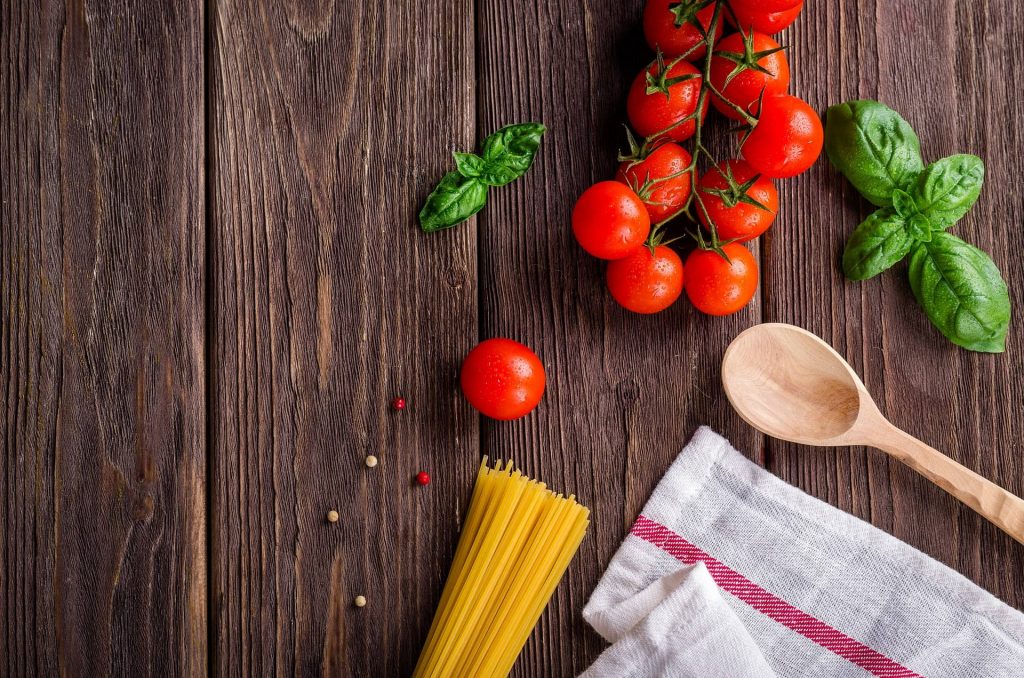Written by Quang Minh-Dang

Many people can think about food all day, and even face the burden of choosing where to eat for an entire group. Food is an important part of life, fueling not only the powerhouse of the cell, but also fueling our happiness. When paired with the word “safety,” the phrase “food safety” can bring up some concerns. What, in fact, is food safety? What does food safety have to do with us, and how can we be aware of it?
Food safety involves the handling, preparation, and preservation of food quality to prevent food illness and contamination. While food safety and related techniques may seem obvious to some, foodborne illnesses still affect approximately 17% of people in the United States annually, a whopping 48 million Americans [1].
This is not to say that foodborne illnesses are on the rise. These illnesses have actually been declining ever since the mid-1990s when the Center for Disease Control began gathering data [2]. Food safety has been a major contributor to this trend, influencing both private and public sectors of the food industry. Increasing consumer awareness of food safety continues to play a vital role in keeping eating experiences on the positive side.
While some of the following food safety practices seem easy to learn, the real trouble comes with whether or not these practices are actually applied or simply forgotten. Food safety programs have been readily accessible in the forms of “Good Consumer Practices,” or GCPs, but they aren’t necessarily translated into reality [4].
Foodborne illnesses are an entirely preventable public health issue and can be stopped with widespread use and integration of food safety practices by food suppliers, restaurants, and consumers. This begins through the application of four vital points – clean, separate, cook, and chill [3]. The most important of the four points is to clean, an idea that not only applies to food safety, but to nearly all aspects of life. One tip for sanitary conditions is to always wash your hands with a combination of soap and warm water before and after performing activities, such as handling food, that can spread germs, bacteria, or viruses.
The next point is to separate your foods [3]. Preparing foods may seem like a lot of work, but when done safely, it pays off by keeping you from getting sick. Separate raw meats, seafood, and eggs from other foods, and make sure the use separate utensils and cutting boards when dealing with raw meats. A small tip for eating at Korean BBQ restaurants: use two tongs, one for the raw meat, and one for the cooked meat. This minimizes contact of foodborne illness-causing agents, and can keep you a happy carnivore.
Cooking your food is the last step before eating [3]. Thus, this may make you rush the process. However, making sure to cook your meats to safe temperatures can make a huge difference. Use a food thermometer to check your meats and make sure that they are safe to consume. When cooking raw steaks and chops, a minimum internal temperature of 145F is recommended, 160F for raw ground meats, and 165F for all poultry – poorly cooked poultry can lead to salmonella, not salmon.
The last point is to chill, this means to refrigerate perishable foods to prevent spoiling [3]. The cold prevents growth of bacteria and increases the amount of time that your food can stay safely edible. This last tip that comes with these important food safety points is that if your food seems off somehow – smelling rancid, looking discolored, feeling slimy – do not eat it.
Stay smart and be food safety aware, consumer safety begins with the consumer.
References:
- “Food Safety.” Food Safety | Healthy People 2020. N.p., n.d. Web. 17 Nov. 2016.
- “FoodNet 2014 Annual Foodborne Illness Surveillance Report.” Centers for Disease Control and Prevention. Centers for Disease Control and Prevention, 2016. Web. 17 Nov. 2016.
- “FSIS.” Foodborne Illness Peaks in Summer. N.p., n.d. Web. 17 Nov. 2016.
- “Good Consumer Practices Are Necessary to Further Improve Global Food Safety.” Food Safety Magazine. N.p., n.d. Web. 17 Nov. 2016.